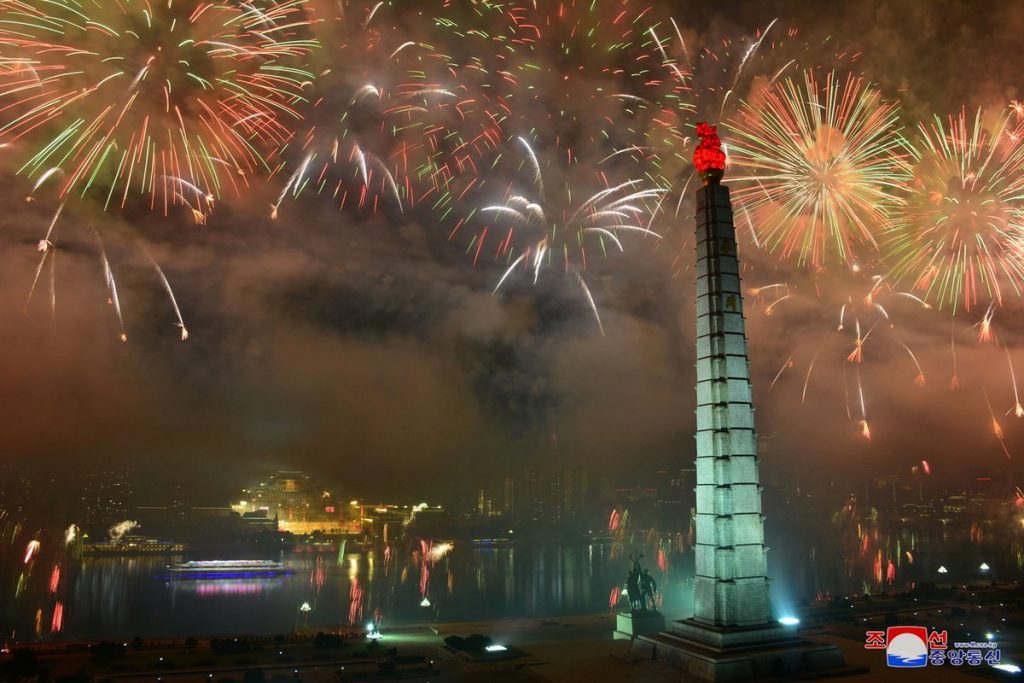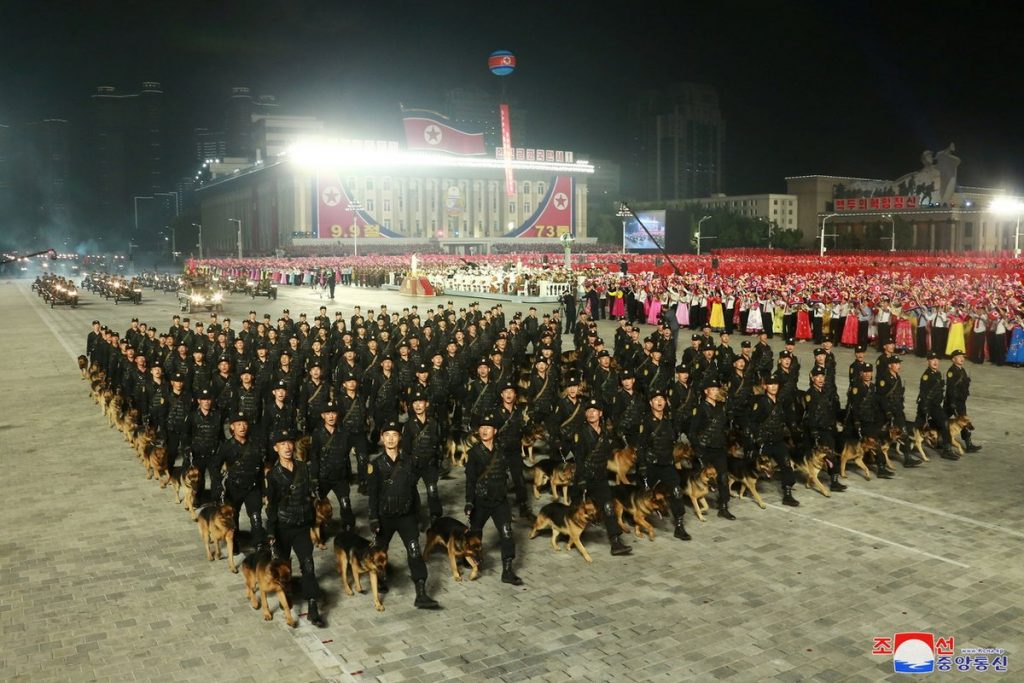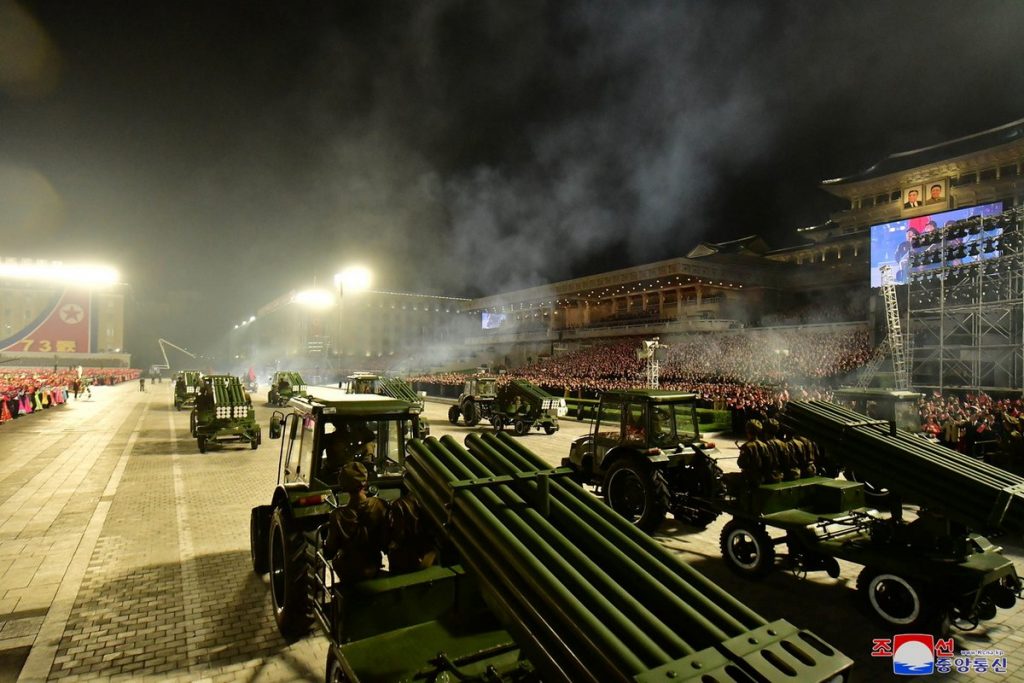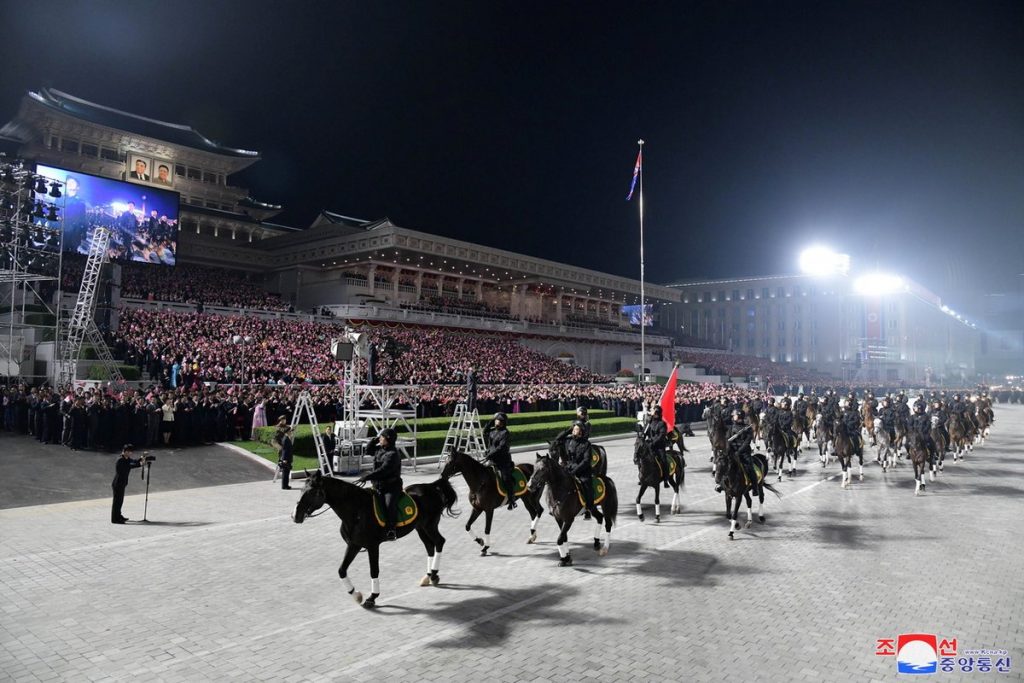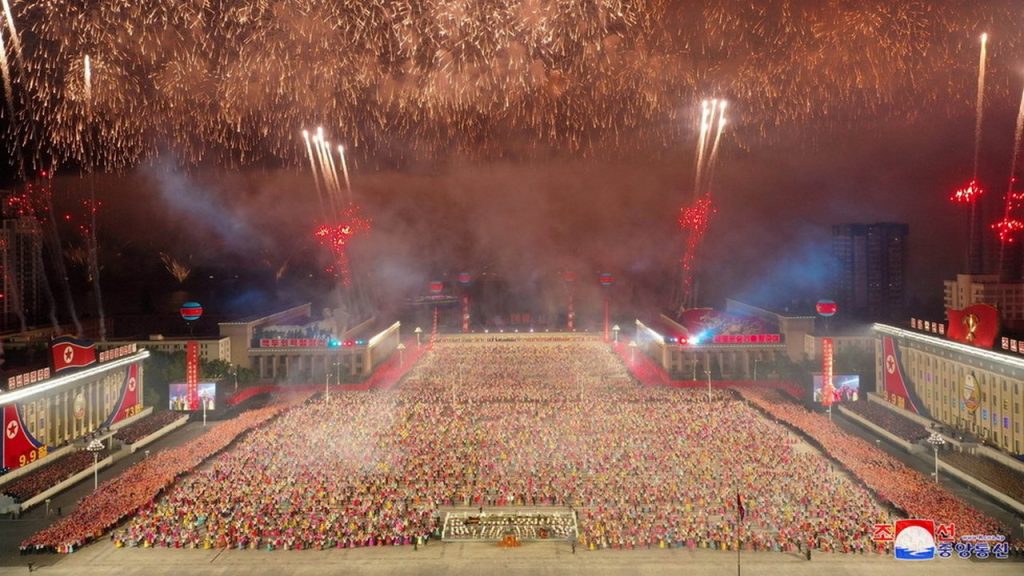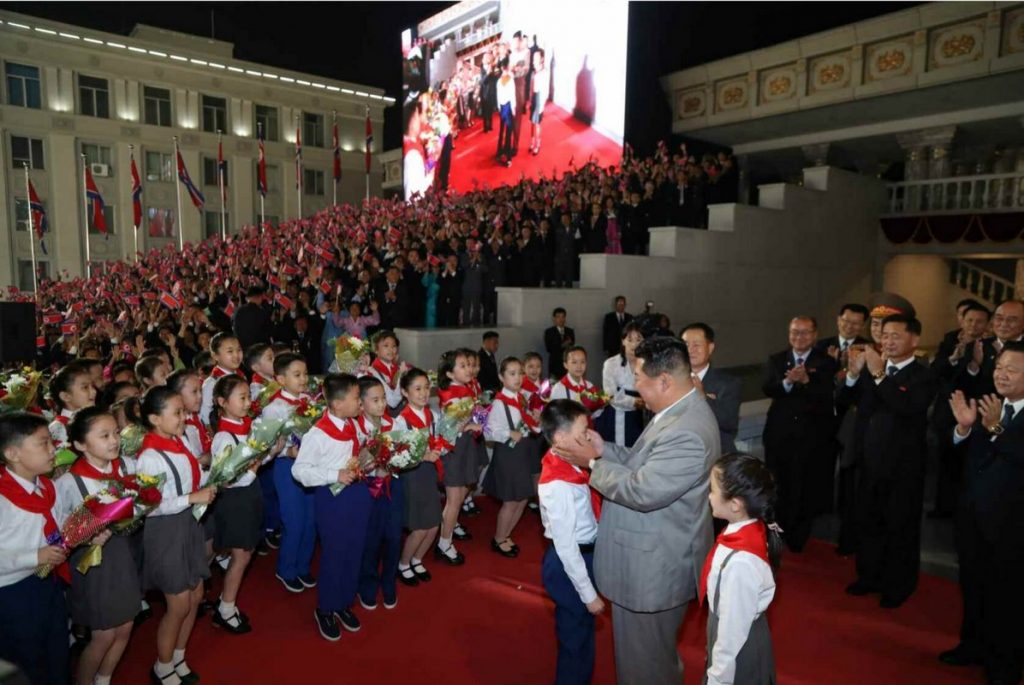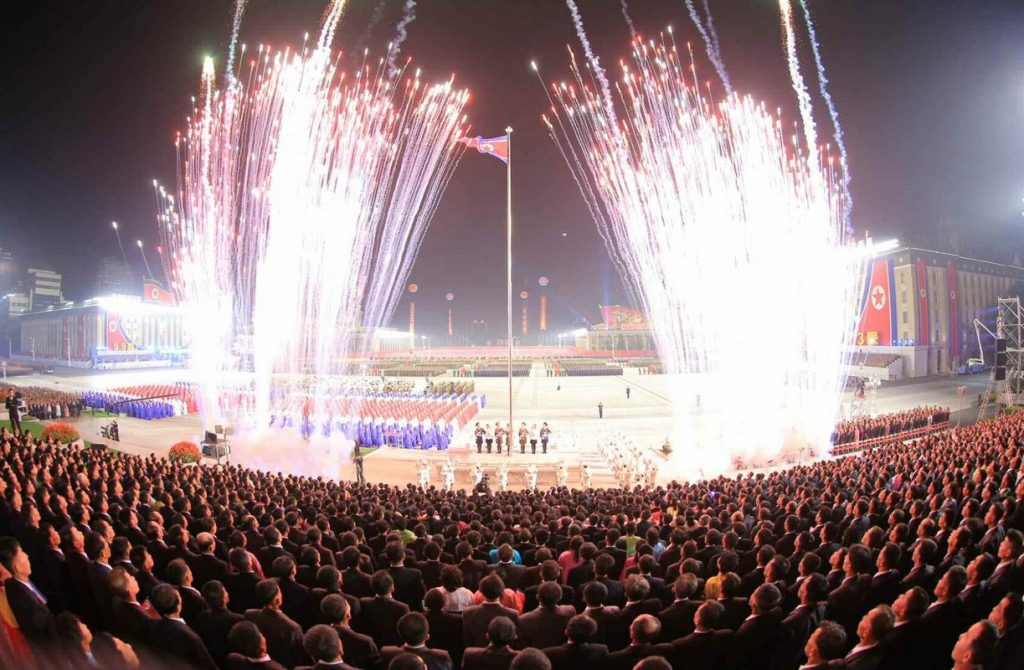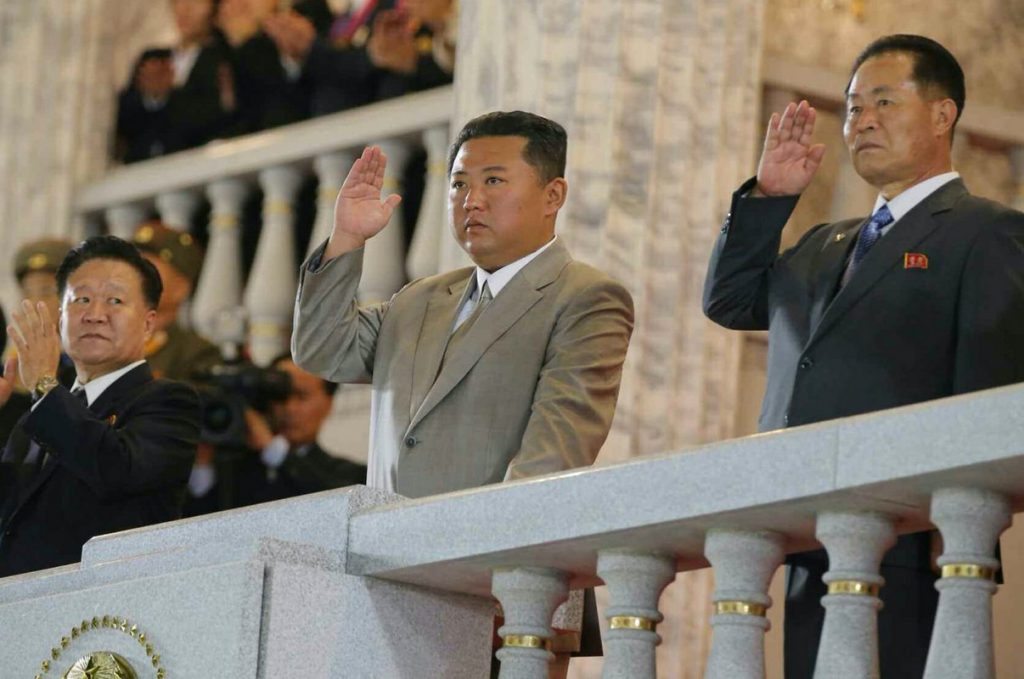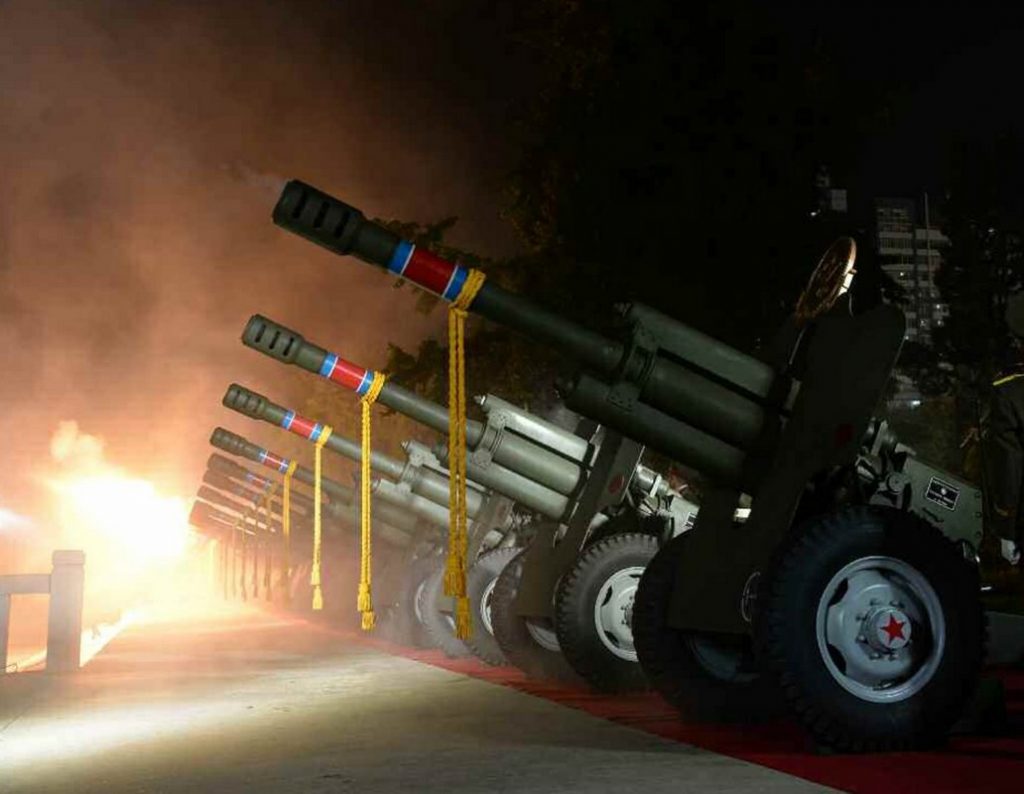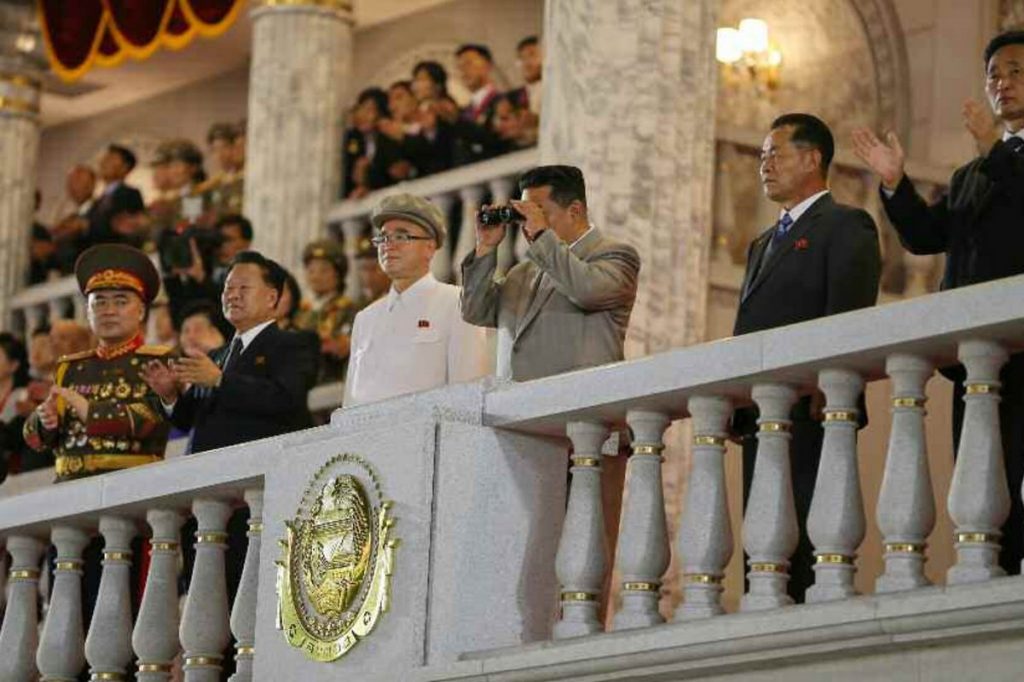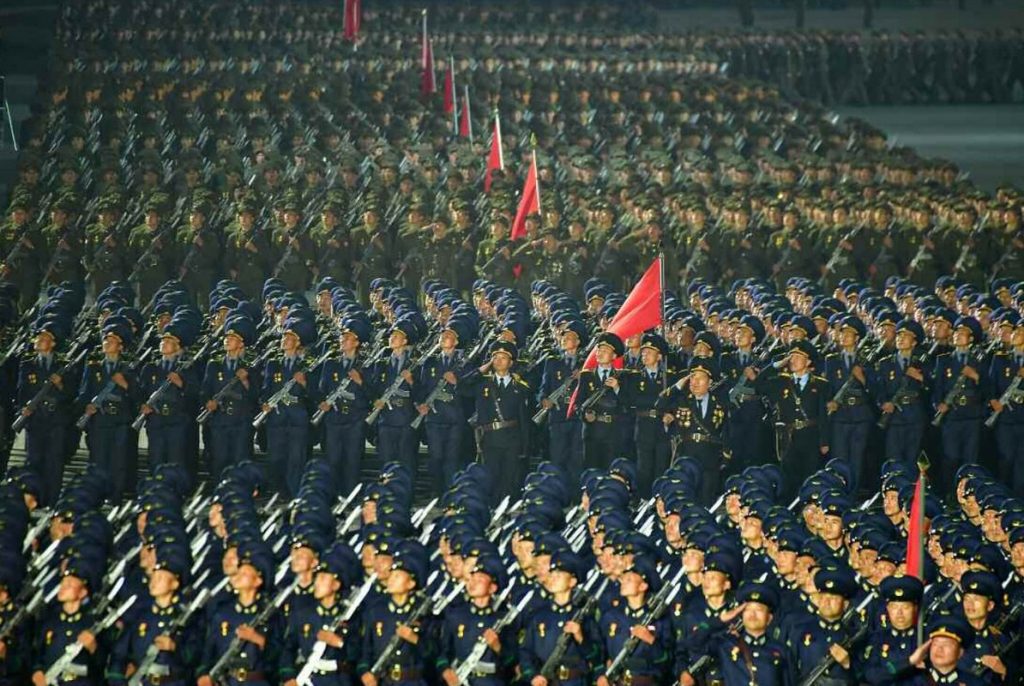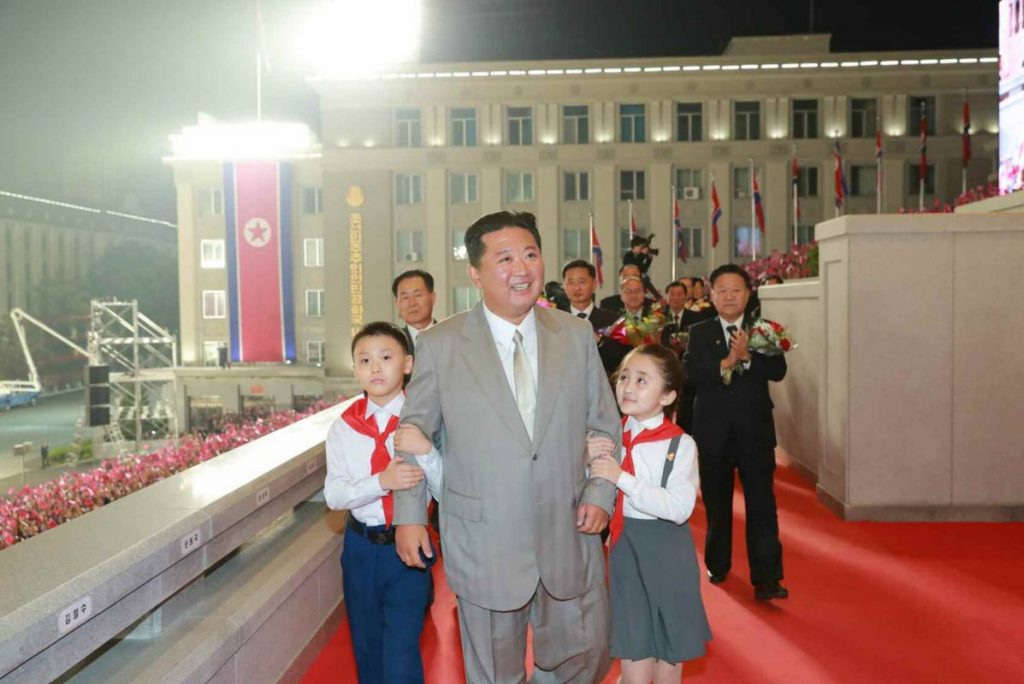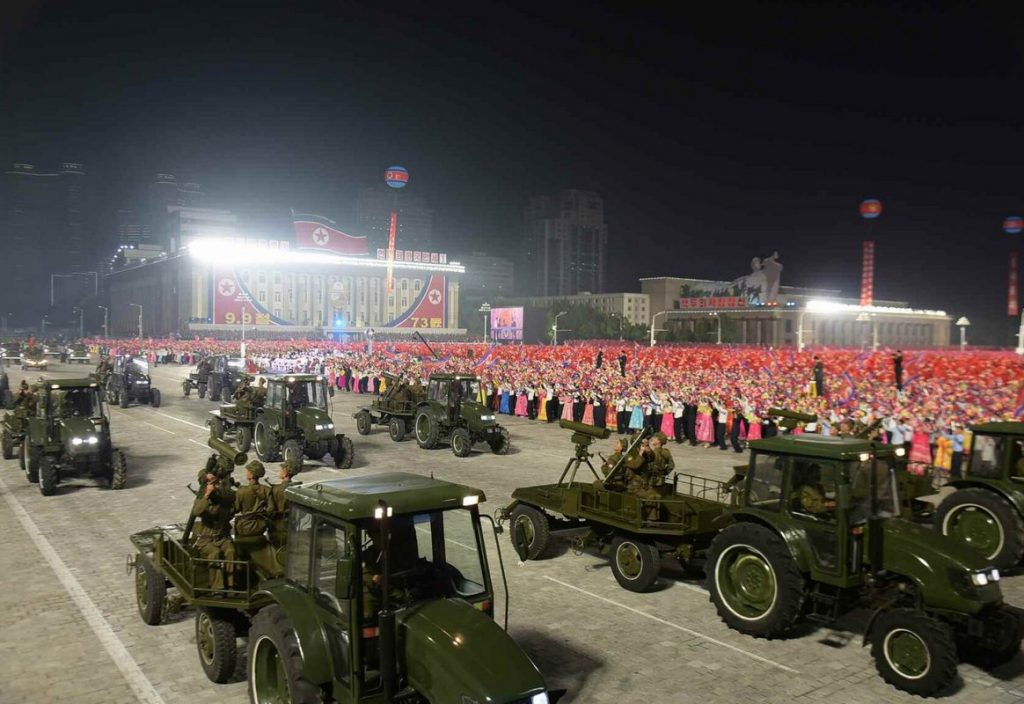North Korea held a massive parade to celebrate 73 years since the state’s foundation, with soldiers and civilians alike seen marching in an elaborate procession, which omitted Pyongyang’s typical displays of major weapon systems.
Held in Kim Il Sung Square in the nation’s capital on Wednesday night, the event saw police, soldiers, and even hazmat-suit-clad civil workers marching in neat columns, according to photos circulated by state media.
Many types of vehicles featured in the parade, including agricultural tractors, as well as animals, such as the horses and dogs described by state media as “military reconnaissance” K-9s trained to “thoroughly suppress and mop-up the maneuvers of the enemies.”
North Korean leader Kim Jong-un attended the event and was seen in photos wearing a grey, Western-style suit, though he reportedly did not address the crowd.
BREAKING: Rodong Sinmun photos of last night's parade show Kim Jong Un in a suit with his top official Jo Yong Won standing next to him in some photos. Fireworks were held, as NK News initially reported per informed sources: https://t.co/1lUz8O4VGV pic.twitter.com/evz8DsdY1l
— NK NEWS (@nknewsorg) September 9, 2021
Top party official Ri Il Hwan spoke instead, saying “Even when our country endured unprecedented challenges and hardships that no other country in the world has faced, our country did not alter its course.”
While the parade was subdued in terms of showcasing Pyongyang’s military prowess, Ri reportedly mentioned the reclusive nation’s quest to build up its military “with all possible means” to increase the defense industry’s “self-reliance.”
Though Pyongyang’s parades are typically accompanied by displays of military might – including ballistic missiles, tanks, and artillery systems – that was largely absent from Wednesday’s event, although some soldiers did tote military rifles and rocket launchers.
Instead of the usual firepower, the crowd was treated to a massive fireworks show.
The procession comes not long after reports that North Korea has reactivated its Yongbyon nuclear reactor after a several-year pause. The plutonium-producing reactor had been idle since late 2018, but a recent report by the International Atomic Energy Agency (IAEA), the UN’s nuclear watchdog, noted the facility appeared to be back up in running as of July. While the agency said it could not confirm its “operational status,” it said resuming work at the reactor would be a “clear violation” of UN resolutions and that “the DPRK’s nuclear activities continue to be a cause for serious concern.”
 Alghadeer TV Alghadeer TV
Alghadeer TV Alghadeer TV
